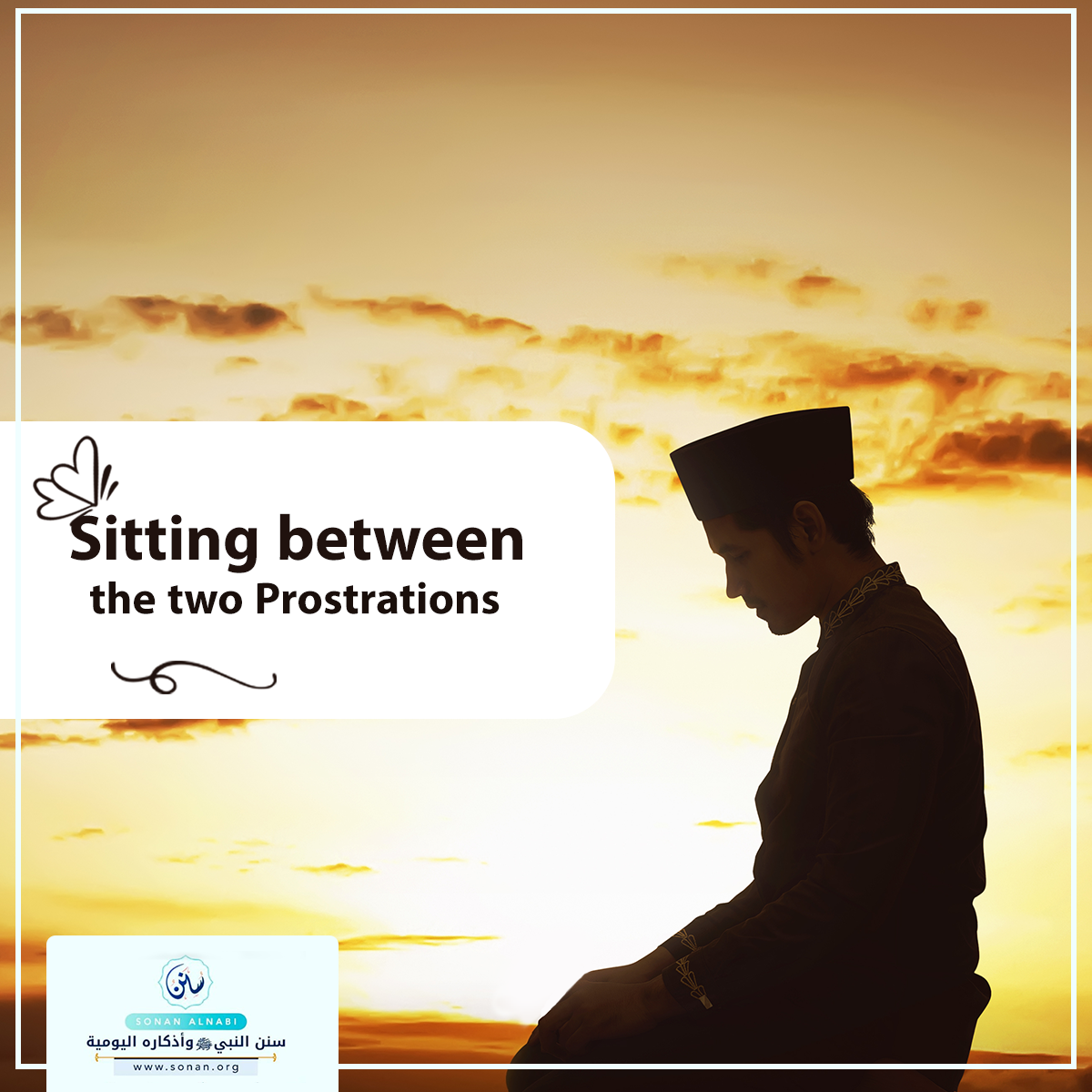Search
Sitting between the two Prostrations

Number 1 of Sunan of Sitting Between the Two Prostrations:
1- Placing the left foot flat on the ground and sitting on it, and placing the right foot erect upright.
This is supported by the Saheeh (trusted)
Hadeeth of Abi Humayd Is-Sā‘idiy which states,
“When the Prophet (PBUH) sat between the two prostrations, he sat on his left foot and erected his right foot upright.”
(Al-Bukhāriy no. 828)
Number 2 of Sunan of Sitting Between the Two Prostrations:
2- Prolonging this pillar.
This is supported by the Hadeeth of Thābit Il-Banāniy that we have already mentioned.
Number 3 of Sunan of Sitting Between the Two Prostrations:
3- Briefly sitting for rest before rising up to the second and fourth Rak‘ahs.
It is Sunnah for one who is praying to sit for a while before he rises up to the second and fourth Rak‘ahs, in an identical form to that of sitting between the two prostrations.
Note: This is a different action in prayer than that of sitting between the two prostrations, but it is mentioned here as it is identical in form to it.
It is called “Sitting for Rest”, and it has no specific supplication.
The legality of it has been proven in three different Ahādeeth, one of which is:
Mālik Ubn Ul-Huwayrith (ABPWH) said,
“I saw the Prophet (PBUH) praying, and at the end of the odd Rak‘ahs of his prayer he would not stand up until he sat down for a moment before rising to stand up.”
(Al-Bukhāriy no. 823)
Mālik Ubn Ul-Huwayrith (ABPWH) is the same narrator who reported the Hadeeth of the Prophet (PBUH) saying,
“Pray like you have seen me praying.”
(Al-Bukhāriy no. 631)
The opinions of scholars varied regarding whether “Sitting for Rest” is Sunnah. The correct choice is that it is Sunnah as indicated by the Hadeeth of Mālik (ABPWH). Among the scholars who said that it is Sunnah are: An-Nawawiy, Ash-Sawkāniy, Ibn Bāz, Al-Albāniy, may Allāh have mercy on them all, and the Permanent Committee for Scientific Research and Iftā’.
An-Nawawiy, may Allāh have mercy on him, said, “This is the correct opinion as proven by the authentic Ahādeeth.”

